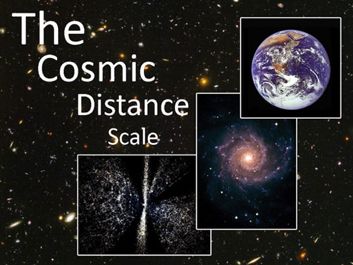Astrophysics Science Division - Education & Outreach
Astrophysics Science Division - Education & Outreach


On this page, we've collected a variety of astrophysics educational resources created by the Astrophysics Science Division's education team and its partners. Click on a category below to jump straight to that section, or scroll down to see everything.
Questions? Contact Elizabeth Apala, Senior Research Assistant.
Websites
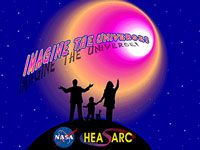
Imagine the Universe
The Imagine the Universe website, for interested astronomers ages 14 and up, explores distant galaxies, massive black holes, brilliant gamma-ray bursts, and the origin of the universe itself.
http://imagine.gsfc.nasa.gov/

StarChild
StarChild is a learning center for young astronomers ages 5-13 to learn about the solar system, the Milky Way galaxy, and the universe beyond.
http://starchild.gsfc.nasa.gov/

NASA Blueshift
Get a behind-the-scenes look at astrophysics at NASA Goddard Space Flight Center! NASA Blueshift shares groundbreaking discoveries, innovative technology, new missions, and other exciting stories through blogs, podcasts, and social media.
http://universe.nasa.gov/blueshift/
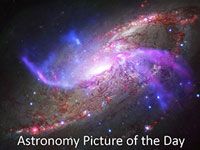
Astronomy Picture of the Day (APOD)
Start each day with a new image celebrating our quest to look up into the night sky - and out to the furthest reaches of the universe. Each image is accompanied by a brief explanation written by a professional astronomer.
http://apod.nasa.gov/
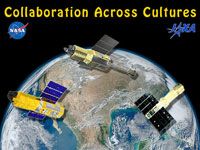
Collaboration Across Cultures
The Collaboration Across Cultures website celebrates the the ongoing collaboration between the United States and Japan on X-ray astronomy missions over the past three decades. These satellites help astronomers understand stars, galaxies, and black holes through the cosmic X-rays we detect from those sources.
http://globalastro.gsfc.nasa.gov/

RXTE Learning Center
Learn about how the Rossi X-ray Timing Explorer (RXTE) observed the fast-moving, high-energy worlds of black holes, neutron stars, X-ray pulsars, and bursts of X-rays that light up the sky and then disappear forever.
https://heasarc.gsfc.nasa.gov/docs/xte/learning_center/

WMAP's Universe 101
This tutorial on cosmology, written by Wilkinson Microwave Anisotropy Probe (WMAP) experts, helps audiences in high school and up understand how cosmologists use the scientific method to investigate the origin, evolution, and ultimate fate of the entire universe.
http://map.gsfc.nasa.gov/universe/
Educator Resources

Imagine the Universe Educators' Corner
The Imagine the Universe Educators' Corner features downloadable lesson plans, posters, and educator guides aimed at middle and high school classrooms. These standards-aligned materials highlight a variety of topics in astronomy including supernovae, the origin of the chemical elements, galaxies, and black holes.
http://imagine.gsfc.nasa.gov/educators/

NASA Family Science Night
The NASA Family Science Night curriculum invites middle school children and their families to explore the importance of science and technology in our daily lives through fun, hands-on activities.
http://universe.nasa.gov/family/
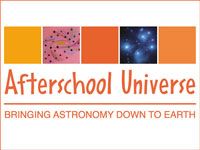
Afterschool Universe
This out-of-school time curriculum uses engaging hands-on activities to take middle school-aged children on a journey through the universe beyond the solar system. The Afterschool Universe website provides full activity instructions and resources for educators to run this program in their local communities.
http://universe.nasa.gov/afterschool/

Big Explosions and Strong Gravity
Engage middle school students in a day-long event full of hands-on activities exploring the life and death of large stars. The manual provides write-ups of each activity and the tools for astronomy-interested educators to run this program in their community.
http://imagine.gsfc.nasa.gov/educators/programs/bigexplosions/

RXTE Educators' Page
The Rossi X-ray Timing Explorer (RXTE) Educators’ page features creative ways to bring the science of RXTE into your classroom. Individual lesson plans highlight topics including binary stars and pulsars.
http://heasarc.gsfc.nasa.gov/docs/xte/learning_center/teacher_info.html
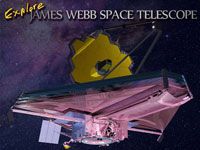
JWST Educators' Page
Use the science and technology of the James Webb Space Telescope (JWST) to engage students in our fascinating universe and how our next premier observatory will study it. These pages feature a variety of programs and lesson plans covering a wide range of ages.
http://jwst.nasa.gov/teachers.html

Collaboration Across Cultures Teacher's Corner
The Collaboration Across Cultures Teacher's Corner features lesson plans, workshop materials, and links to the “Building the Coolest X-ray Satellite” educational video. These materials use fundamental science topics including temperature and the behavior of light to bring X-ray astronomy into your classroom.
http://globalastro.gsfc.nasa.gov/?page_id=53
Paper Models

RXTE Satellite Paper Model
Print and assemble a detailed model of the Rossi X-ray Timing Explorer (RXTE).
http://heasarc.gsfc.nasa.gov/docs/xte/learning_center/instructions1.html

JWST Paper Model
Build your own model of the James Webb Space Telescope (JWST), learning the function and purpose of each part of the satellite.
http://www.jwst.nasa.gov/papermodel.html
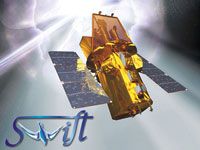
Swift Paper Model
This booklet contains all the instructions, drawings, and descriptions needed to build a paper model of the Swift satellite.
http://swift.sonoma.edu/education/index.html#model

Fermi Paper Model
Build your own Fermi satellite out of paper with these instructions, complete with definitions of Fermi components.
http://fermi.sonoma.edu/teachers/index.php#print

WMAP Universe Model
Assemble a paper model of the observable universe using the Wilkinson Microwave Anisotropy Probe's (WMAP) full-sky image of microwave light.
http://map.gsfc.nasa.gov/resources/edactivity1.html
Resource Collections
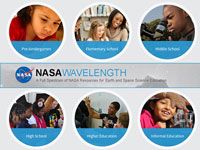
NASA Wavelength
Find NASA education resources using this digital collection of Earth and space science materials for educators of all levels - both in and out of the classroom. These resources, developed through funding of the NASA Science Mission Directorate, have undergone a peer-review process through which educators and scientists ensure the content is accurate and useful in an educational setting.
http://www.nasawavelength.org/
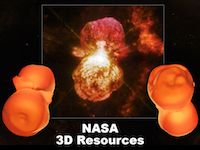
NASA 3D Printable Resources
This site contains a growing collection of 3D models, textures, and images from NASA projects and personnel. Print your own satellite or astrophysical object with NASA’s 3D printable models including satellites like Chandra or objects like the Homunculus Nebula. All resources on this site are free to download and use.
http://nasa3d.arc.nasa.gov/

Science Visualization Studio Astrophysics Resources
Find the latest images, animations, and videos highlighting astrophysics science and satellites.
http://svs.gsfc.nasa.gov/cgi-bin/search.cgi?sortby=relevance&value=Astrophysics
|
|


